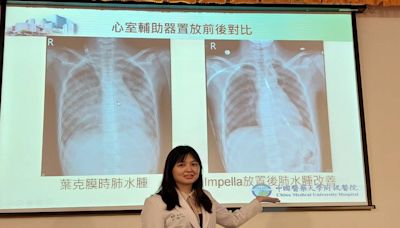搜尋結果
Influenza vaccines, colloquially known as flu shots, are vaccines that protect against infection by influenza viruses.[13][14] New versions of the vaccines are developed twice a year, as the influenza virus rapidly changes.[13] While their effectiveness varies from year to year, most provide modest to high protection against influenza.[13][15 ...
Influenza, commonly known as " the flu " or just " flu ", is an infectious disease caused by influenza viruses. Symptoms range from mild to severe and often include fever, runny nose, sore throat, muscle pain, headache, coughing, and fatigue. These symptoms begin one to four (typically two) days after exposure to the virus and last for about ...
The COVID-19 pandemic (also known as the coronavirus pandemic ), caused by severe acute respiratory syndrome coronavirus 2 ( SARS-CoV-2 ), began with an outbreak in Wuhan, China, in December 2019. It spread to other areas of Asia, and then worldwide in early 2020.
- Uses
- Health Effects
- Available Forms and Nomenclature
- Production
- Safety
- See Also
Medical uses
1. Pharmaceutical-grade PEG is used as an excipientin many pharmaceutical products, in oral, topical, and parenteral dosage forms. 2. PEG is the basis of a number of laxatives (as MiraLax, RestoraLAX, etc.). Whole bowel irrigation with polyethylene glycol and added electrolytes is used for bowel preparation before surgery or colonoscopy or for children with constipation. Macrogol (with brand names such as Laxido, Movicol and Miralax) is the generic name for polyethylene glycol used as a laxat...
Chemical uses
1. Polyethylene glycol is also commonly used as a polar stationary phase for gas chromatography, as well as a heat transfer fluidin electronic testers. 2. PEG is frequently used to preserve waterlogged wood and other organic artifacts that have been salvaged from underwater archaeological contexts, as was the case with the warship Vasa in Stockholm, and similar cases. It replaces water in wooden objects, making the wood dimensionally stable and preventing warping or shrinking of the wood when...
Biological uses
1. An example study was done using PEG-diacrylate hydrogels to recreate vascular environments with the encapsulation of endothelial cells and macrophages. This model furthered vascular disease modeling and isolated macrophage phenotype's effect on blood vessels. 2. PEG is commonly used as a crowding agent in in vitro assays to mimic highly crowded cellular conditions. Although polyethylene glycol is considered biologically inert, it can form non-covalent complexes with monovalent cations such...
PEG is considered biologically inert and safe by the U.S. FDA. However, a growing body of evidence shows the existence of a detectable level of anti-PEG antibodies in approximately 72% of the population, never treated with PEGylated drugs, based on plasma samples from 1990 to 1999.[further explanation needed] Due to its ubiquity in a multitude of p...
PEG, PEO, and POE refer to an oligomer or polymer of ethylene oxide. The three names are chemically synonymous, but historically PEG is preferred in the biomedical field, whereas PEO is more prevalent in the field of polymer chemistry. Because different applications require different polymer chain lengths, PEG has tended to refer to oligomers and p...
The production of polyethylene glycol was first reported in 1859. Both A. V. Lourenço and Charles Adolphe Wurtz independently isolated products that were polyethylene glycols. Polyethylene glycol is produced by the interaction of ethylene oxide with water, ethylene glycol, or ethylene glycol oligomers. The reaction is catalyzed by acidic or basic c...
PEO's have "very low singledose oral toxicity", on the order of tens of grams per kg body weight (oral). Because of its low toxicity, PEO is used in a variety of edible products.The polymer is used as a lubricating coating for various surfaces in aqueous and non-aqueous environments. The precursor to PEGs is ethylene oxide, which is hazardous. Ethy...
e. The 1918–1920 flu pandemic, also known as the Great Influenza epidemic or by the common misnomer Spanish flu, was an exceptionally deadly global influenza pandemic caused by the H1N1 influenza A virus. The earliest documented case was March 1918 in the state of Kansas in the United States, with further cases recorded in France, Germany and ...
Poliomyelitis (/ ˌ p oʊ l i oʊ ˌ m aɪ ə ˈ l aɪ t ɪ s / POH-lee-oh-MY-ə-LY-tiss), commonly shortened to polio, is an infectious disease caused by the poliovirus. Approximately 75% of cases are asymptomatic; mild symptoms which can occur include sore throat and fever; in a proportion of cases more severe symptoms develop such as headache, neck stiffness, and paresthesia.
Ebola. Two nurses standing near Mayinga N'Seka, a nurse with Ebola virus disease in the 1976 outbreak in Zaire. N'Seka died a few days later. Ebola, also known as Ebola virus disease ( EVD) and Ebola hemorrhagic fever ( EHF ), is a viral hemorrhagic fever in humans and other primates, caused by ebolaviruses. [1]




